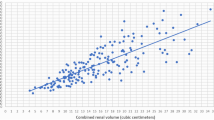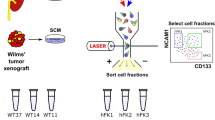Abstract
Extract: Thirty-one newborns with anencephaly had small kidneys; the weights of these organs were only 67% of the mean value for control infants of the same gestational age. Kidneys of the anencephalic infants had only 81% as many nephrons as kidneys of the control infants. In the kidneys of anencephalic newborns, tubular cells distal to the proximal convoluted tubules contained less cytoplasm than did comparable cells of control subjects. For example, in anencephalic infants, cells in the distal convoluted tubules had only 57% as much cytoplasm as control cells. Pituitary dysfunction may be directly or indirectly responsible for this maldevelopment, since in this study, an infant with isolated congenital absence of the pituitary had similar renal abnormalities while a newborn anencephalic infant with a normal parabiotic twin partner had near normal kidneys.
Speculation: Dysfunction of the hypothalmic—neurohypophyseal system might contribute to the hydramnios common in anencephalic gestations by leading to increased urine output by the fetus. In any case, nephron structure is so abnormal in anencephalic newborns that it should be interesting to test their renal function.
Similar content being viewed by others
Log in or create a free account to read this content
Gain free access to this article, as well as selected content from this journal and more on nature.com
or
Author information
Authors and Affiliations
Rights and permissions
About this article
Cite this article
Naeye, R., Blanc, W. & Milic, A. Renal Development in Dysplasia of the Fetal Pituitary. Pediatr Res 4, 257–261 (1970). https://doi.org/10.1203/00006450-197005000-00004
Issue date:
DOI: https://doi.org/10.1203/00006450-197005000-00004



